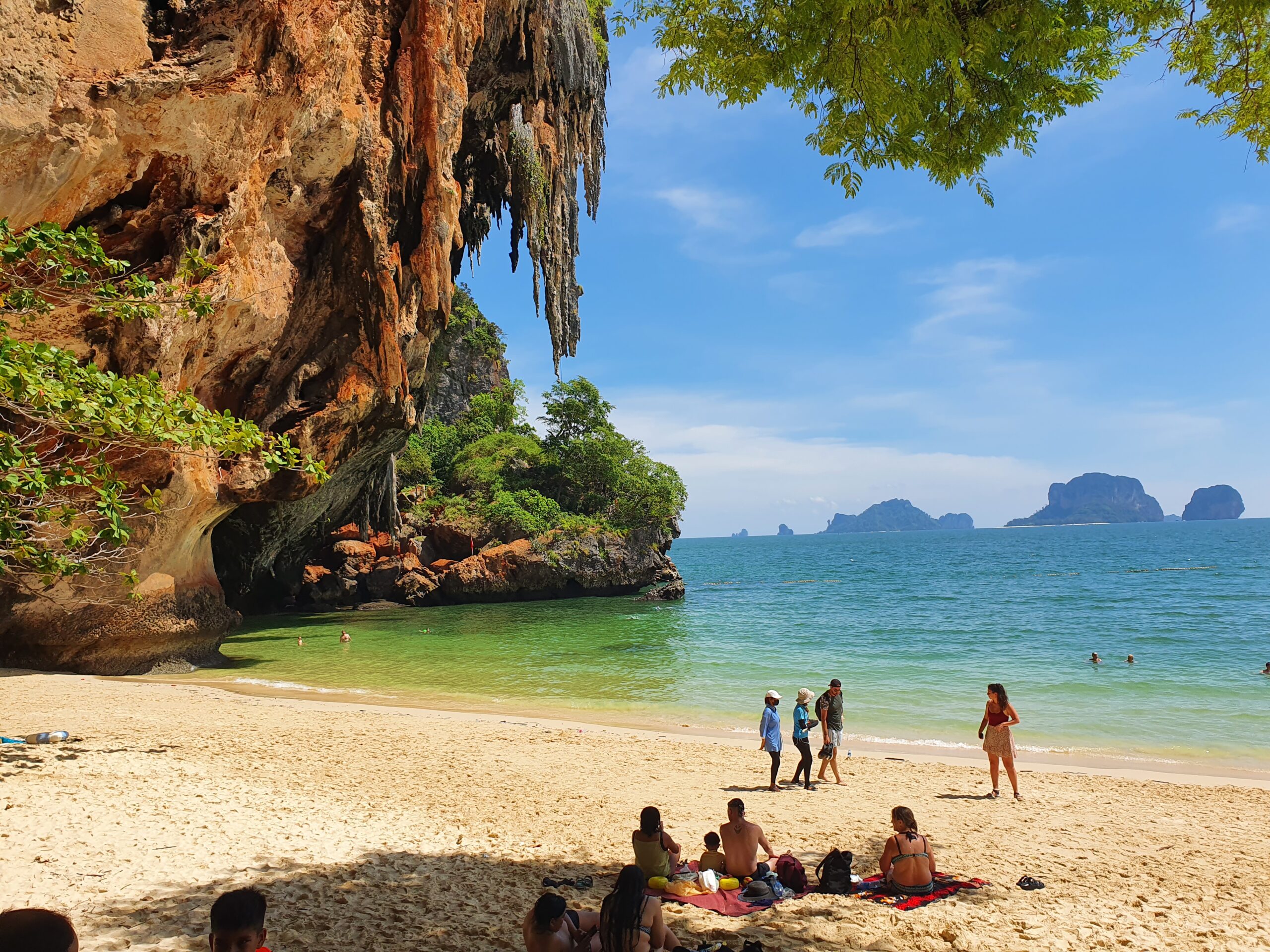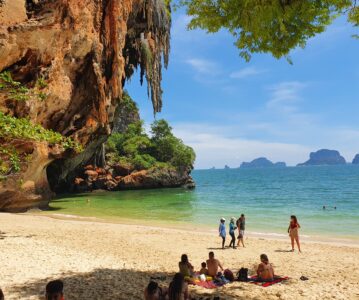This island is incredibly beautiful. The people here live in beautiful stilt houses, often decorated with carvings, cultivate neat flowerbeds and do without cars for the most part. Motorcycles and scooters are used for transportation, which is completely sufficient for the modest size of the island. The people are incredibly friendly! They all wave to us and greet us joyfully and we feel like in a new country. The island is crossed much too quickly and we find ourselves in a larger village. A place to spend the night is needed and we spy a suitable place near a school. In the darkness we build up our hammock-mosquito net construction, find a hose with which we can shower quite well, brush our teeth and just want to say goodbye to the mats, when the headlight of a rattling motorcycle comes closer and closer to us and finally stops.
Two guys get off and greet us. The younger one speaks passable English and explains to us that this is a school and therefore “Possesion of the King” and “not save”. We definitely feel safe enough here and are a bit annoyed, to say the least, that we now have to break off our comfortable camp in the name of our safety. The young man squirms and both apologize several times, but they persist. We are told to go to the nearby police station and set up camp there. We have to admit defeat, dismantle everything again and follow the two to the post. At least they accept that we prefer to spend the night outside rather than in a stuffy room and so we hang up our hanging beds under a canopy in the middle of the village. Unfortunately, the lighting stays on the whole night, but even here it is possible to sleep. The annoyance finally fades and we come to terms with our new place. Actually, it is amazing that something like this happens to us for the first time after more than 13,000 kilometers of driving!
Another ferry brings us the next morning from the island on a spectacular ride back to the mainland. Here the area is neither flat nor hilly, but is adorned by striking karst rocks that rise steeply from the land and sea into the blue sky. This area of Thailand is world famous for its spectacular climbing rocks and beaches. We chose the Ao Nang stand on the map for our next overnight stay. As it quickly turns out, this beach is a popular vacation destination and so we get to know the tourism a bit closer. Chic beach cafes and resorts that far exceed our budget and demands line the coast. But our trained eyes lead us unerringly to the end of the beach. Here, a few closed beach bars are bumming around and we find everything we need: shade trees, a Plan B roof with pillars for the possible nightly rain shower, a toilet, a water hose for showering and, of course, the inviting beach. Cheap food and drinking water have to be procured from a little further away, but we have two bicycles with us. We spend the afternoon bathing, dozing and reading and make friends with the deaf-mute corn seller, who seems to be a real beach legend here. He is easier to communicate with than many a talking Thai; his gestures and facial expressions are perfected! We take turns drawing maps in the sand and tell each other about our travels. The corn man has also been around; he has crossed Laos and Thailand by motorcycle. Here at Ao Nang he has found his perfect business niche: On bamboo charcoal he grills corn on the cob, which he then sells for 50 Bath per piece (normally such a corn on the cob costs 20 Bath) to the western tourists. His business is going great – they know him – and the nibbled off corn cobs are still fully picked off by the beach sparrows.
The corn man soon notices that we intend to spend the night on this beach. Obviously he likes our plan, because he shows us in which part of the beach we can have our rest, which electrical outlet is accessible and functional and where we can find a free toilet.
The next day we spend in vacation mode and take a longtail boat ride to the nearby Railay beach. We climb up (and down) a very slippery path to a jungle lagoon and then head off to visit the original Ton Sai climbing beach. I’ve been here before, about ten years ago, and I’m amazed when I don’t recognize any of my memories. Where once the international climbing scene had a wonderful hippy beach complete with self-made bars, bungalows and unique climbing walls for themselves, now tall coconut palms sway in the wind and another faceless resort claims the place exclusively. Where have they gone now, the climbers? Somewhere they must be, we think to ourselves, and set out to find them. We leave the beach and stroll along a dull concrete wall toward the jungle beyond. Decaying witnesses of my memory line the way: self-made bars, tattered hammocks, former booth pickles. All in all, it’s a pretty sad sight. The wall draws a big arc around the resort and blocks the view to the beach. Finally, we encounter some life and above all: food to our taste (and in our price range). In this run-down, but still symphytic corner at the stand without beach access we find the remains of the original scene. We are greeted like old friends and are soon chatting with a Spanish couple, an Englishman and the Thai locals. The Fried Rice portions are designed for hungry climbers and also do justice to us cyclists. Apparently an investor showed up about 10 years ago and first had the entire existing infrastructure of the scene moved to the jungle. The bars, the bungalows, everything had to be removed from the stand and moved back 200 meters. Then for many years first came nothing, until finally the terrible wall and the resort were built.
“But yes, we are climbing despite the heat,” says the cheerful Englishman and we try to imagine: Sweaty hands, hot stone, sunburn and heat sting. Phu, we’d rather go for a swim in the lukewarm sea. Somewhat relieved that the climbers were not completely driven away and somewhat depressed that capital always seems to be more powerful than enthusiasm, we leave Tonsai and make our way home to our quiet corner at Ao Nang, where we spend another night.
Now it is time to cross Thailand once from west to east to reach the east coast and the border to Malaysia.
Almost in the middle- in Trang- we are allowed to spend two nights with Kim and his family. Kim is American and his wife Bua is Thai. Their daughter Jenna sometimes has to serve as an interpreter and we get a little insight into the potential communication challenges of an international couple with completely different mother tongues. Kim seems to have hosted all the long-distance cyclists pedaling through this corner of the world over the last few years. His guestbook is overflowing with cards, greetings and souvenir photos, and Kim never tires of telling us about all the long-term projects of others.
The next day is a school holiday – the king’s mother is celebrating her birthday – and we unexpectedly get to go on another beach trip, this time Thailand-style: we leave in the morning and on the way we fill the big freezer with ice cubes, Coke cans and shrink-wrapped snack bites. Once you arrive, you secure a good spot in the shade and rent a picnic blanket. Jenna and we play shark games in the water and at some point we order something from the nearest beach kitchen to a nearby table. The day flies by and wonderfully sandy-salty we make our way home.
A last stage of the day brings us over a wild chain of hills to the small town of Phattalung. Here we treat ourselves to a cool room, organize another train ticket, enjoy the night market and board the train to the Malaysian border early the next morning. The timing works out well: Our Thailand visa expires the same day we approach the Malaysian border after a long, hot train ride and a last Thai fried rice. As with every border crossing, we are excited about the new country and look forward to the “find the difference” game of the first days.
Translated with www.DeepL.com/Translator (free version)


